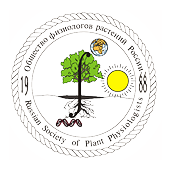Новости науки и практики // Январь 2024

A new type of plant metalloreductase maintains root growth under low phosphorus
Phosphorus is essential for undisturbed plant growth and development. However, in many soils, phosphorus is only poorly available. One mechanism used by plants to increase phosphorus availability is the release of malate, an organic acid, which can form complexes with iron or aluminium in the soil, thereby liberating sorbed phosphate. However, this response can also result in iron overaccumulation, which can inhibit root growth. An international research team led by the IPK Leibniz Institute found out that the protein HYP1, a member of a yet poorly characterized family of electron transporters, helps to protect roots from increased iron reactivity induced in response to phosphorus deficiency.
https://www.eurekalert.org/news-releases/1030994
Long noncoding RNA‐mediated epigenetic regulation of auxin‐related genes controls shade avoidance syndrome in Arabidopsis
The long noncoding RNA (lncRNA) AUXIN‐REGULATED PROMOTER LOOP (APOLO) recognizes a subset of target loci across the Arabidopsis thaliana genome by forming RNA–DNA hybrids (R‐loops) and modulating local three‐dimensional chromatin conformation. Mammarella et al. show that APOLO regulates shade avoidance syndrome by dynamically modulating expression of key factors.
https://www.embopress.org/doi/full/10.15252/embj.2023113941?utm_source=substack&utm_medium=email
Diversified molecular adaptations of inorganic nitrogen assimilation and signaling machineries in plants
Zhang et al. highlight innovations in inorganic nitrogen assimilation and signaling machineries, ranging from molecular modifications of proteins to genomic rearrangements, which shaped developmental and metabolic adaptations of plants to changeable nutrient availability in environments.
https://nph.onlinelibrary.wiley.com/doi/10.1111/nph.19508?utm_source=substack&utm_medium=email
Discovery: Plants use “trojan horse” to fight mold invasions
UC Riverside scientists have discovered that plants send tiny, innocuous-seeming lipid “bubbles” filled with RNA across enemy lines, into the cells of the aggressive mold. Once inside, different types of RNA come out to suppress the infectious cells that sucked them in.
https://www.eurekalert.org/news-releases/1029442
The end game(s) of photosynthetic carbon metabolism
The year 2024 marks 70 years since the general outline of the carbon pathway in photosynthesis was published. Although several alternative pathways are now known, it is remarkable how many organisms use the reaction sequence described 70 yrs ago, which is now known as the Calvin–Benson cycle or variants such as the Calvin–Benson–Bassham cycle or Benson–Calvin cycle. However, once the carbon has entered the Calvin–Benson cycle and is converted to a 3-carbon sugar, it has many potential fates. This review will examine the last stages of photosynthetic metabolism in leaves.
Regulation of Rubisco activity in crops
Efficient plant acclimation to changing environmental conditions relies on fast adjustments of the transcriptome, proteome, and metabolome. Regulation of enzyme activity depends on the activity of specific chaperones, chemical post-translational modifications (PTMs) of amino acid residues, and changes in the cellular and organellar microenvironment. Central to carbon assimilation, and thus plant growth and yield, Rubisco activity is regulated by its chaperone Rubisco activase (Rca) and by adjustments in the chloroplast stroma environment. Focused on crops, Amaral et al. highlight the main PTMs and stromal ions and metabolites affecting Rubisco and Rca in response to environmental stimuli.
https://nph.onlinelibrary.wiley.com/doi/10.1111/nph.19369?utm_source=substack&utm_medium=email
Acid sensor and calcium store discovered in plants
Using optogenetics, Würzburg researchers have detected a new acid sensor in plant cells that is addressing a cell-internal calcium store, as they report in the journal "Science".
https://www.eurekalert.org/news-releases/1011343
Genomic analysis of Coccomyxa viridis, a common low-abundance alga associated with lichen symbioses
Lichen symbiosis is centered around a relationship between a fungus and a photosynthetic microbe, usually a green alga. In addition to their main photosynthetic partner (the photobiont), lichen symbioses can contain additional algae present in low abundance. The biology of these algae and the way they interact with the rest of lichen symbionts remains largely unknown. Tagirdzhanova et al. present the first genome sequence of a non-photobiont lichen-associated alga. Coccomyxa viridis was unexpectedly found in 12% of publicly available lichen metagenomes.
https://www.nature.com/articles/s41598-023-48637-w?utm_source=substack&utm_medium=email
Researchers improve seed nitrogen content by reducing plant chlorophyll levels
Chlorophyll plays a pivotal role in photosynthesis, which is why plants have evolved to have high chlorophyll levels in their leaves. However, making this pigment is expensive because plants invest a significant portion of the available nitrogen in both chlorophyll and the special proteins that bind it. As a result, nitrogen is unavailable for other processes. In a new study, researchers reduced the chlorophyll levels in leaves to see if the plant would invest the nitrogen saved into other process that might improve nutritional quality.
https://www.eurekalert.org/news-releases/1030202
How tomato plants use their roots to ration water during drought
When water supplies are low, tomato roots produce suberin—the molecule that gives wine corks and waxy potato skins their water-repellent qualities—to control water flow.
https://www.eurekalert.org/news-releases/1030119
The evolution of photosynthesis better documented thanks to the discovery of the oldest thylakoids in fossil cyanobacteria
Researchers have identified microstructures in fossil cells that are 1.75 billion years old. These structures, called thylakoid membranes, are the oldest ever discovered. They push back the fossil record of thylakoids by 1.2 billion years and provide new information on the evolution of cyanobacteria which played a crucial role in the accumulation of oxygen on the early Earth.
https://www.sciencedaily.com/releases/2024/01/240105145059.htm
Structures and mechanisms of the Arabidopsis cytokinin transporter AZG1
Recent studies have revealed that members of the ‘Aza-Guanine Resistant’ (AZG) protein family from Arabidopsis thaliana can mediate cytokinin uptake in roots. Here we present 2.7 to 3.3 Å cryo-electron microscopy structures of Arabidopsis AZG1 in the apo state and in complex with its substrates trans-zeatin (tZ), 6-benzyleaminopurine (6-BAP) or kinetin. AZG1 forms a homodimer and each subunit shares a similar topology and domain arrangement with the proteins of the nucleobase/ascorbate transporter (NAT) family. Comparison of the AZG1 structures determined in inward-facing conformations and predicted by AlphaFold2 in the occluded conformation allowed us to propose that AZG1 may carry cytokinins across the membrane through an elevator mechanism.
https://www.nature.com/articles/s41477-023-01590-y
Токсичность частиц серебра для экосистем впервые оценили в Академии биологии и биотехнологии им. Д.И. Ивановского ЮФУ
Специалисты-биологи ЮФУ впервые дали оценку экотоксичности частиц серебра разного размера на основе широкого спектра представителей почвенной биоты, в том числе растений, микроорганизмов и др. Выяснилось, что в большинстве случаев частицы серебра размером 10 нм оказывают более сильное экотоксическое влияние на биологические показатели, чем частицы размером 100 и 1000 нм. Результаты работы позволят спрогнозировать риски загрязнения экосистем и использовать чувствительные организмы для мониторинга загрязнения сельскохозяйственных экосистем.
https://scientificrussia.ru/articles/toksicnost-castic-serebra-dla-ekosistem-vpervye-ocenili-v-ufu
A century of studying plant secondary metabolism—From “what?” to “where, how, and why?”
Over the past century, early advances in understanding the identity of the chemicals
that collectively form a living plant have led scientists to deeper investigations
exploring where these molecules localize, how they are made, and why they are
synthesized in the first place. Many small molecules are specific to the plant kingdom
and have been termed plant secondary metabolites, despite the fact that they can
play primary and essential roles in plant structure, development, and response to the environment.
https://academic.oup.com/plphys/advance-article/doi/10.1093/plphys/kiad596/7499152
Reduced Carbon Dioxide by Overexpressing EPSPS Transgene in Arabidopsis and Rice: Implications in Carbon Neutrality through Genetically Engineered Plants
With the increasing challenges of climate change caused by global warming, the
effective reduction of carbon dioxide (CO2) becomes an urgent environmental issue
for the sustainable development of human society. Previous reports indicated
increased biomass in genetically engineered (GE) Arabidopsis and rice
overexpressing the 5-enolpyruvylshikimate-3-phosphate synthase (EPSPS) gene,
suggesting the possibility of consuming more carbon by GE plants.
Новости
Новости науки и практики // Апрель 2024
Обзор научных новостей, опубликованных во всемирной паутине за последний месяцФосфорилирование плазматической мембраны H+-АТФазы Thr881 (треонин) участвует в светоиндуцированном открывании устьиц
Ученые из Университета Нагои (Nagoya University) и Института трансформирующих биомолекул (WPI-ITbM) обнаружили новый ...Научная конференция «Photosynthesis and Hydrogen Energy Research for Sustainability – 2024»
Приглашаем Вас принять участие в XII международной научной конференции


Объявления
Записей не найдено.



